Most patients are looking to improve their teeth by two shades – and for some, these results can’t come quick enough.
Unfortunately, all too often; quick results come at the expense of sensitivity to the patient.
Patients whitening without supervision may risk products with higher peroxide levels or longer application times, with hopes of quicker results.
Worse still, patients may risk products from unlicensed suppliers and/or opt for whitening at a point where it would not be advisable for them to do so.
Teeth Whitening: DIY Solutions
With so many options to choose from, it can be confusing for patients to decide on the best option should they choose to whiten their teeth.
In line with the GDC regulations & the law, products containing or releasing Hydrogen Peroxide (between .1% and 6%) can only be sold to dental practitioners.
So, what are some alternatives?
-
Toothpastes & Mouthwashes
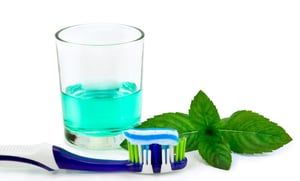 Whitening Toothpastes & Mouthwashes are great.
Whitening Toothpastes & Mouthwashes are great.
They freshen your patient’s breath, they remove mild surface stains, they’re not likely to cause sensitivity and…. they are unlikely to improve the shade of your patients’ teeth by two shades.
Why? Because legally these products can only contain or release less than 0.1% hydrogen peroxide.
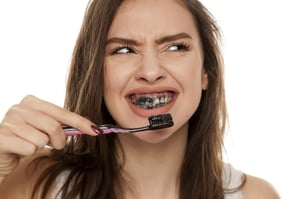 Increasingly popular, charcoal-based products can do more harm than good.
Increasingly popular, charcoal-based products can do more harm than good.
According to a review by the British Dental Journal, Charcoal-based toothpastes often contain no fluoride to protect the teeth; and could increase the risk of tooth decay and staining.
Often seen as a ‘quick fix’ solution for white teeth, these products can lead patients to brush excessively; leading to tooth wear and sensitivity issues later down the line.
-
Whitening from an Unlicensed Supplier
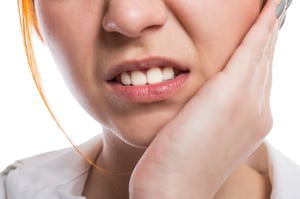 Very loosely categorised as an alternative, obtaining a whitening treatment from anyone other than someone licenced to do so is simply reckless.
Very loosely categorised as an alternative, obtaining a whitening treatment from anyone other than someone licenced to do so is simply reckless.
When purchasing from an unlicensed supplier, patients have no way of knowing either the efficacy or the safety of their whitening treatment.
Highlighting the dangers of this, a recent case saw a young mother who used illegal tooth whitening; experience intense pain, sensitivity and even the potential loss of her teeth.
Teeth Whitening: The Professional Solution
So, how does effective tooth whitening actually work?
Here’s the science behind it…
Tooth whitening works because Hydrogen Peroxide breaks down into water and an oxygen free radical. There are four key steps in the process.

Professional Whitening Gels
When it comes to professional whitening agents, the two key choices are Hydrogen Peroxide (HP) or Carbamide Peroxide (CP).
These come in different strengths to suit a range of different patient needs.
Some common strengths you may see include:
- 6% Hydrogen Peroxide (equivalent to approx 18% Carbamide Peroxide) – this is the strongest EU accepted whitening gel that can be used for at home whitening. Typical recommended wear time is 30-90 minutes
- 16% Carbamide Peroxide – This gives very similar results to the 6% Hydrogen Peroxide. However, as Carbamide Peroxide is applied, it breaks down slowly into Hydrogen Peroxide and urea (approximately a third of the strength of CP).
Answering Common Whitening Sensitivity Questions
Understandably, sensitivity is a concern for patients when using any kind of bleaching agent.
Here are some answers to the most commonly asked questions of the moment:
Does Teeth Whitening Cause Sensitivity?
For teeth whitening to work, the bleaching agent must penetrate the tooth structure which can temporarily cause microscopic exposed dentin. This can lead some to feel sensitivity or discomfort in the short term, however this pain usually reverses shortly after the whitening procedure. For short term relief, use a desensitizing toothpaste that contains potassium nitrate.
How Do you Stop Your Teeth from Hurting After Whitening?
For minor pain, anything containing potassium nitrate (such as a desensitizing toothpaste) can help to ease the discomfort that is felt shortly after whitening. Avoiding any triggers such as hot and cold foods makes good sense, and for more considerable pain; consult with your dentist for a sustained release version of potassium nitrate (which can be worn in trays).
Why Do My Teeth Hurt When I Whiten them?
Your teeth may hurt when you whiten them because you have naturally sensitive teeth to begin with, or because the whitening process has temporarily caused sensitivity as the bleaching agent has worked to whiten your teeth. This sensitivity is typically short term and will last for a maximum of 48 hours. Whilst your sensitivity is at its highest, ensure to use a toothpaste suitable for sensitive teeth.
Choosing the Right Whitening Gel for Sensitive Patients
It is important to consider the following when choosing the right gel for patients who suffer from sensitivity:
- PH Level – Peroxide is most efficient and active at a neutral pH of 7.0 or above. Some companies struggle to stabilise the product and, therefore, reduce the pH level to compensate this. This makes it more acidic and increases the chance of sensitivity and possible damage to the enamel. Make sure you choose a gel with a near neutral pH that has an increased alkalinity once applied.
- Water Content – It is important for gels to be water based, as peroxide dehydrates the teeth which is believed to be a contributing sensitivity factor. Look for a gel with a high-water content of approximately 20% that still retains optimum viscosity.
- Desensitisers – Some gels contain desensitisers such as Potassium Nitrate and Fluoride, which are very effective at reducing sensitivity during the treatment. It is important to bear this in mind when making a decision.
How White Dental Beauty Gels Effectively Manage Sensitivity
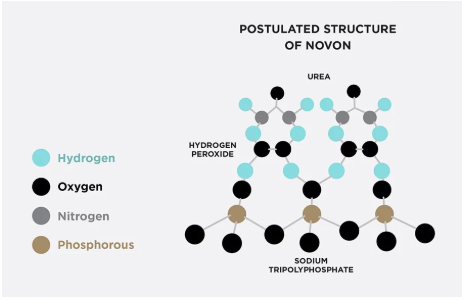 White Dental Beauty offer tooth whitening gels available in 6% HP, and 5%, 10% and 16% CP. All the gels are powered by NOVON®.
White Dental Beauty offer tooth whitening gels available in 6% HP, and 5%, 10% and 16% CP. All the gels are powered by NOVON®.
NOVON® is a whitening compound containing Hydrogen Peroxide, urea and sodium tripolyphosphate which produces a pH jump into the alkaline pH range upon application. This ''pH jump'' enhances the release of perhydroxyl ions for a faster whitening effect.
It is this NOVON® compound that enables White Dental Beauty to assist particularly sensitivity patients with their revolutionary 5% Carbamide Peroxide formulation.
Although the gel contains lower levels of peroxide, it can achieve the same results as a standard 10% Carbamide Peroxide gel. This means teeth are less exposed to the sensitivity issues higher concentrations can cause[2] and means patients with sensitive teeth can whiten their teeth comfortably.
For your patients comfort, all gels contain the desensitisers Potassium Nitrate and Fluoride, in addition to carrying a high-water content to prevent tooth dehydration (which is believed to further help with sensitivity); providing consistent, reliable results.
Choosing your Preferred Percentage
.jpg?width=400&name=021%20(1000x1000).jpg) It is important you choose the right gel to suit your patients needs and lifestyle:
It is important you choose the right gel to suit your patients needs and lifestyle:
And with four professional whitening systems, White Dental Beauty offer an advanced generation of bleaching that means you can offer your patients a greater choice:
- 6% Hydrogen Peroxide (HP) – The Strongest EU Accepted gel with a recommended wear time of 30-90 minutes at a time
- 16% Carbamide Peroxide (CP)– A high strength gel (breaks down to approx 5.3% HP), with a recommended wear time of 1-2 hours.
- 10% Carbamide Peroxide (CP)- The original strength for overnight gels (breaks down to approx 3.3% hydrogen peroxide) – can be worn for 2-4 hours at a time or overnight.
- 5% Carbamide Peroxide (CP)- A mild gel for people with sensitive teeth – as mentioned previously, this has been seen to be as effective as a 10% Carbamide Peroxide gel due to the power of NOVON®.
Overcoming Whitening Sensitivity
Whilst whitening with peroxide has long been a barrier for patients with sensitive teeth, this does not mean that those who suffer from sensitivity cannot whiten.
Choosing the right whitening gel is key. To effectively whiten, the product must be dispensed a GDC registered dental professional and contain the active whitening agent: Hydrogen Peroxide or Carbamide Peroxide.
It is wise to also consider other factors; including pH levels, water content, desensitisers and wear time. Whilst every patient is different, the optimum solution is a product that provides the best results for the patient, whilst mitigating any risk of potential sensitivity.
With the help of NOVON®, White Dental Beauty Gels provide the perfect solution for those with sensitive teeth; with a complete line which provides a solution for every patient, day or night.
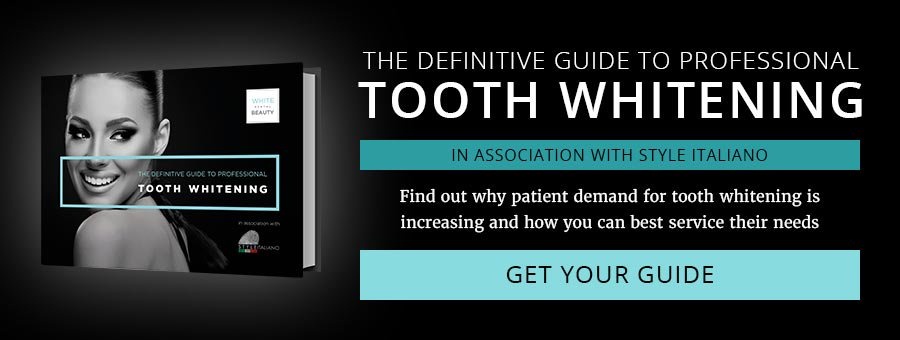 [1] The Journal of the American Dental Association (March 2013) https://www.ncbi.nlm.nih.gov/nlmcatalog/7503060 Accessed 30/05/2019
[1] The Journal of the American Dental Association (March 2013) https://www.ncbi.nlm.nih.gov/nlmcatalog/7503060 Accessed 30/05/2019
[2] A new three-component formulation for the efficient whitening of teeth (Carbamide Plus) Hyland et al Clinical Oral Invest (2015) Carbamide Plus is now known as NOVON®

